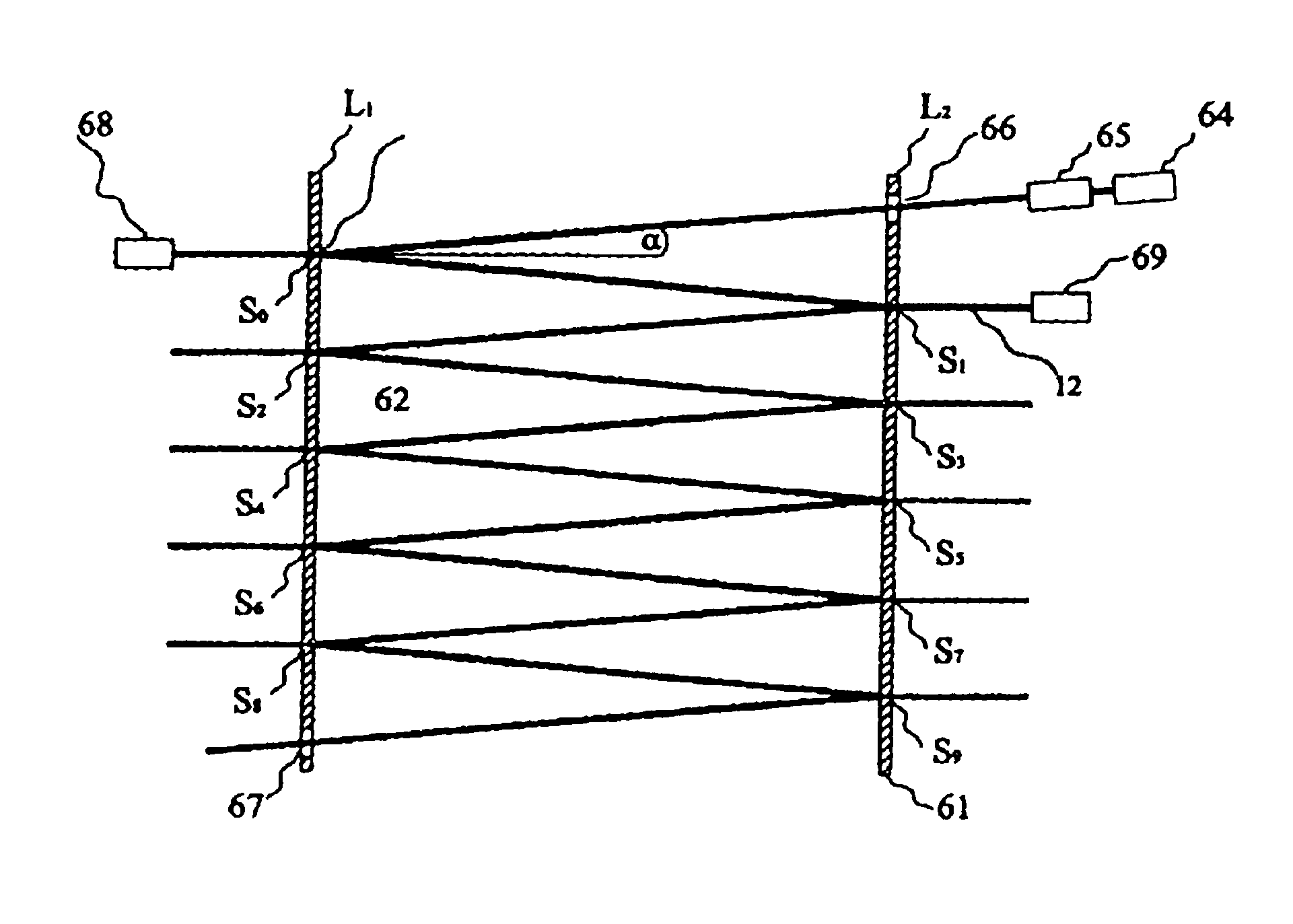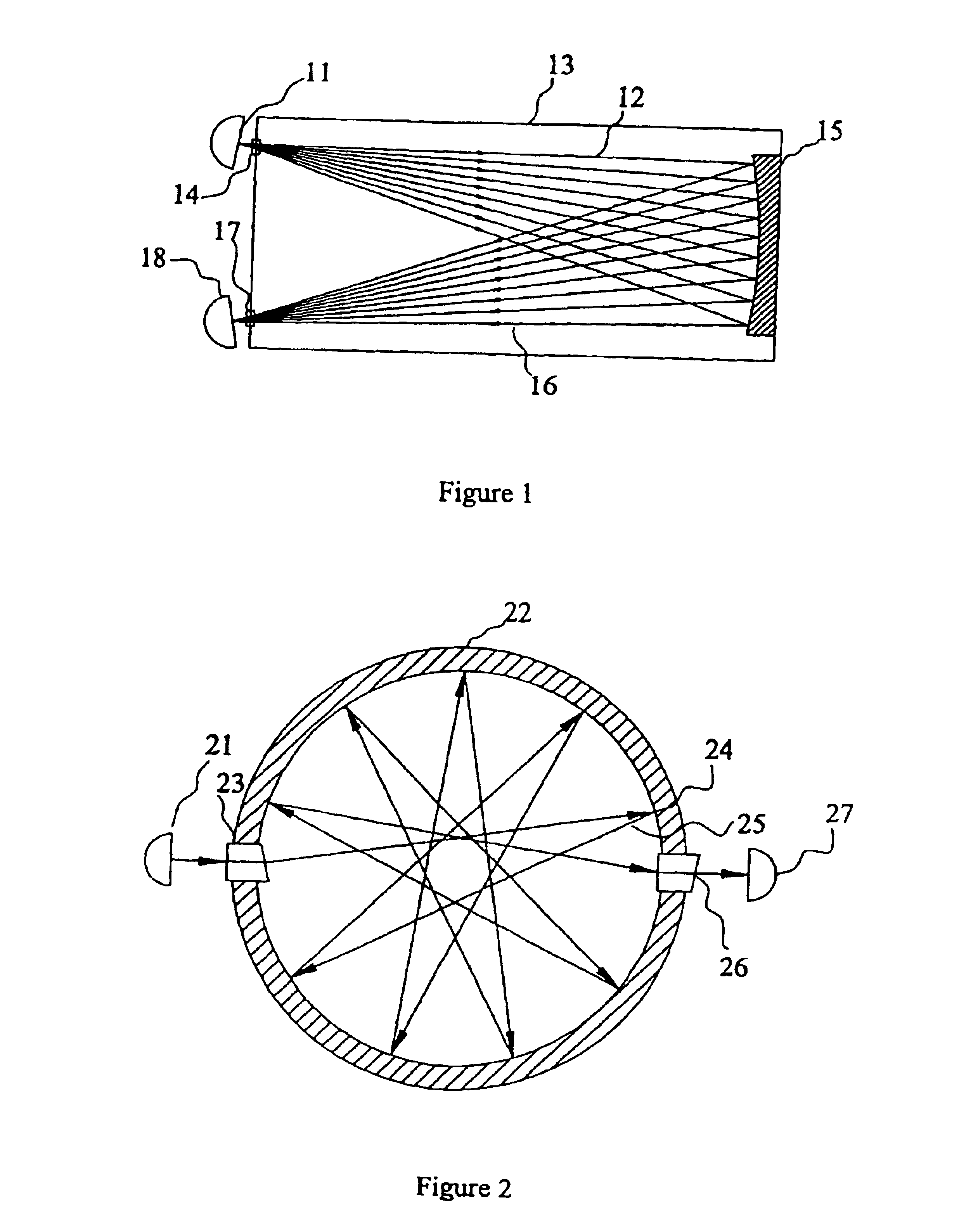Apparatus and method for measuring decay in intensity of electromagnetic radiation in multipass spectrometry
a multi-pass spectrometry and electromagnetic radiation technology, applied in the field of apparatus and method for measuring decay in intensity of electromagnetic radiation, can solve the problems of sensitivity of measurement technique, limitation and limited application of conventional absorption spectroscopy
- Summary
- Abstract
- Description
- Claims
- Application Information
AI Technical Summary
Benefits of technology
Problems solved by technology
Method used
Image
Examples
Embodiment Construction
[0042]FIG. 5 shows a schematic representation of an embodiment of the invention.
[0043]The apparatus shown in FIG. 5 comprises two parallel, flat, partially-reflective mirrors 51,52 having a configuration akin to a Fabry Perot resonator. A source 53 directs a beam 54 of electromagnetic radiation onto the facing surface of mirror 52. The beam is incident on this surface at a small angle (typically less than 10°) with respect to the normal and so undergoes multiple reflections between the facing surfaces of the mirrors, as shown in the drawing.
[0044]With this arrangement, the beam 54 is constrained to follow a predetermined, extended path between the mirrors, being alternately reflected at each mirror at successive positions spaced apart equidistantly from each other along the path.
[0045]A number of detectors is provided to measure the unreflected parts of the electromagnetic radiation at different positions D along the extended path followed by the beam. As will be described in greate...
PUM
| Property | Measurement | Unit |
|---|---|---|
| angle | aaaaa | aaaaa |
| wavelength range | aaaaa | aaaaa |
| reflection coefficient | aaaaa | aaaaa |
Abstract
Description
Claims
Application Information
 Login to View More
Login to View More - R&D
- Intellectual Property
- Life Sciences
- Materials
- Tech Scout
- Unparalleled Data Quality
- Higher Quality Content
- 60% Fewer Hallucinations
Browse by: Latest US Patents, China's latest patents, Technical Efficacy Thesaurus, Application Domain, Technology Topic, Popular Technical Reports.
© 2025 PatSnap. All rights reserved.Legal|Privacy policy|Modern Slavery Act Transparency Statement|Sitemap|About US| Contact US: help@patsnap.com



